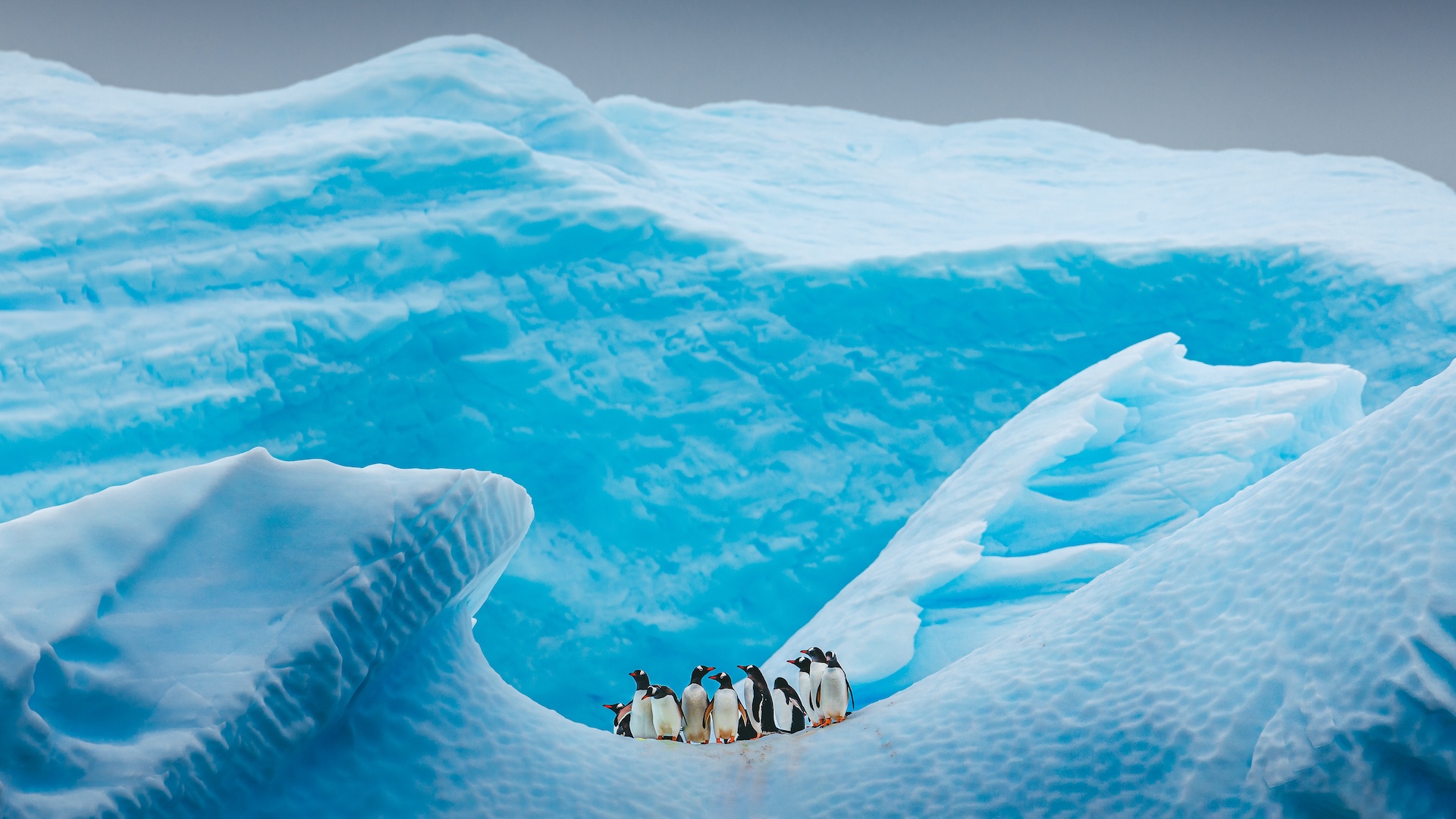
When was the last time Antarctica was ice-free?
Antarctica is covered by a miles-thick ice sheet, but was that always the case? And when was the coldest continent ice-free?

Antarctica, which is nearly four times the size of the United States, is almost entirely covered by a miles-thick layer of ice.
But the South Pole hasn't always been frozen. So when was the last time Antarctica was ice-free?
This ice cap formed relatively recently in geological terms, experts told Live Science. "I think most people would say 34 million years ago was when the ice sheet first formed in Antarctica," said Eric Wolff, a paleoclimatologist at the University of Cambridge. "[Previously] most of it would have been like northern Canada today — tundra and coniferous forest."
Global temperatures are a key factor influencing the extent of ice coverage. Around 50 million years ago, the world was about 25 degrees Fahrenheit (14 degrees Celsius) warmer than it is today, but temperatures steadily decreased over the following 16 million years. By 34 million years ago — a time period known as the Eocene-Oligocene boundary — the climate was 14.4 F (8 C) warmer than it is today.
But what triggered this temperature drop, and was that all it took for the ice sheets to form?
Related: Which is colder: The North or South Pole?
"There are two factors, and probably both were in play," Wolff told Live Science. "One of them is a change in the carbon dioxide concentration of the atmosphere, and the other is the movements of the continents and, in particular, the opening up of the Drake Passage," the strait between South America and Antarctica that connects the South Atlantic with the South Pacific.
Sign up for the Live Science daily newsletter now
Get the world’s most fascinating discoveries delivered straight to your inbox.
The more carbon dioxide that's in the atmosphere, the more heat is trapped and the warmer the planet is.
From about 60 million to 50 million years ago, the carbon dioxide concentration in Earth's atmosphere was really high — somewhere around 1,000 to 2,000 parts per million, or between 2.5 to 5 times today's levels, said Tina van de Flierdt, a geochemist at Imperial College London.
"But we know that the CO2 in the atmosphere came down across that Eocene-Oligocene boundary," she told Live Science. This decrease in atmospheric CO2 would have been accompanied by a cooling of the global climate, she added, probably tipping Earth over a threshold and allowing ice sheets to form.
However, there was also likely localized cooling on the Antarctic continent due to plate tectonics, Wolff said. Around this time, South America and Antarctica finally separated, opening up what's now the Drake Passage.
"This led to what we call a circumpolar current — water going right around Antarctica in a circle," Wolff said. "This isolates Antarctica from the rest of the world and makes it much harder for warm air masses to get across the Southern Ocean and, therefore, makes Antarctica colder."
Plate tectonics also directly influenced carbon dioxide levels, he added. Rock weathering and volcanic activity are both part of the carbon cycle, so over thousands of years, geological processes can shift the balance of gases in the atmosphere.
Although some uncertainty remains, researchers are fairly confident about this transition 34 million years ago thanks to the chemical signatures in rock sediments. Oxygen atoms exist in two forms: oxygen-16 (common oxygen) and oxygen-18 (heavy oxygen). Continental ice contains a higher proportion of the lighter oxygen-16, meaning the oceans — and, therefore, the shells of small sea creatures — contain a higher percentage of oxygen-18 when ice sheets are bigger.
"By looking at the oxygen isotopes in the carbonate shells of small sea creatures in ocean sediments, you see a jump around 34 million years ago, which people take as being because the [lighter] oxygen isotope is going onto the continent of Antarctica," Wolff explained.
As for whether Antarctica could ever be ice-free again, "It's definitely possible, van de Flierdt said. "Planet Earth has done it before. Planet Earth could do it again." While it's unlikely that human activity will lead to the complete melting of the ice sheet, it's important we do everything possible to limit the loss of ice from the Antarctic now, she added. "It's in our hands to avoid the worst-case scenario," van de Flierdt said.

Victoria Atkinson is a freelance science journalist, specializing in chemistry and its interface with the natural and human-made worlds. Currently based in York (UK), she formerly worked as a science content developer at the University of Oxford, and later as a member of the Chemistry World editorial team. Since becoming a freelancer, Victoria has expanded her focus to explore topics from across the sciences and has also worked with Chemistry Review, Neon Squid Publishing and the Open University, amongst others. She has a DPhil in organic chemistry from the University of Oxford.










